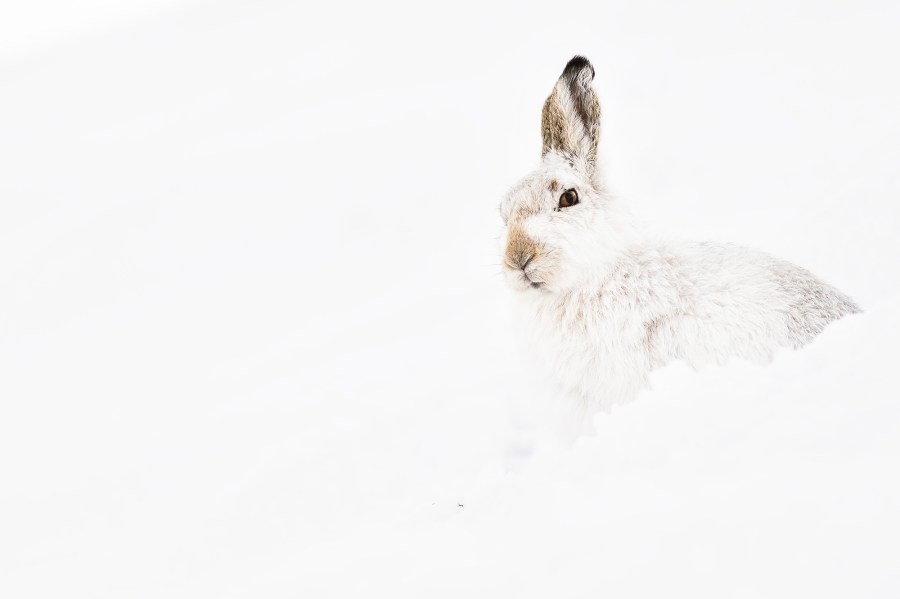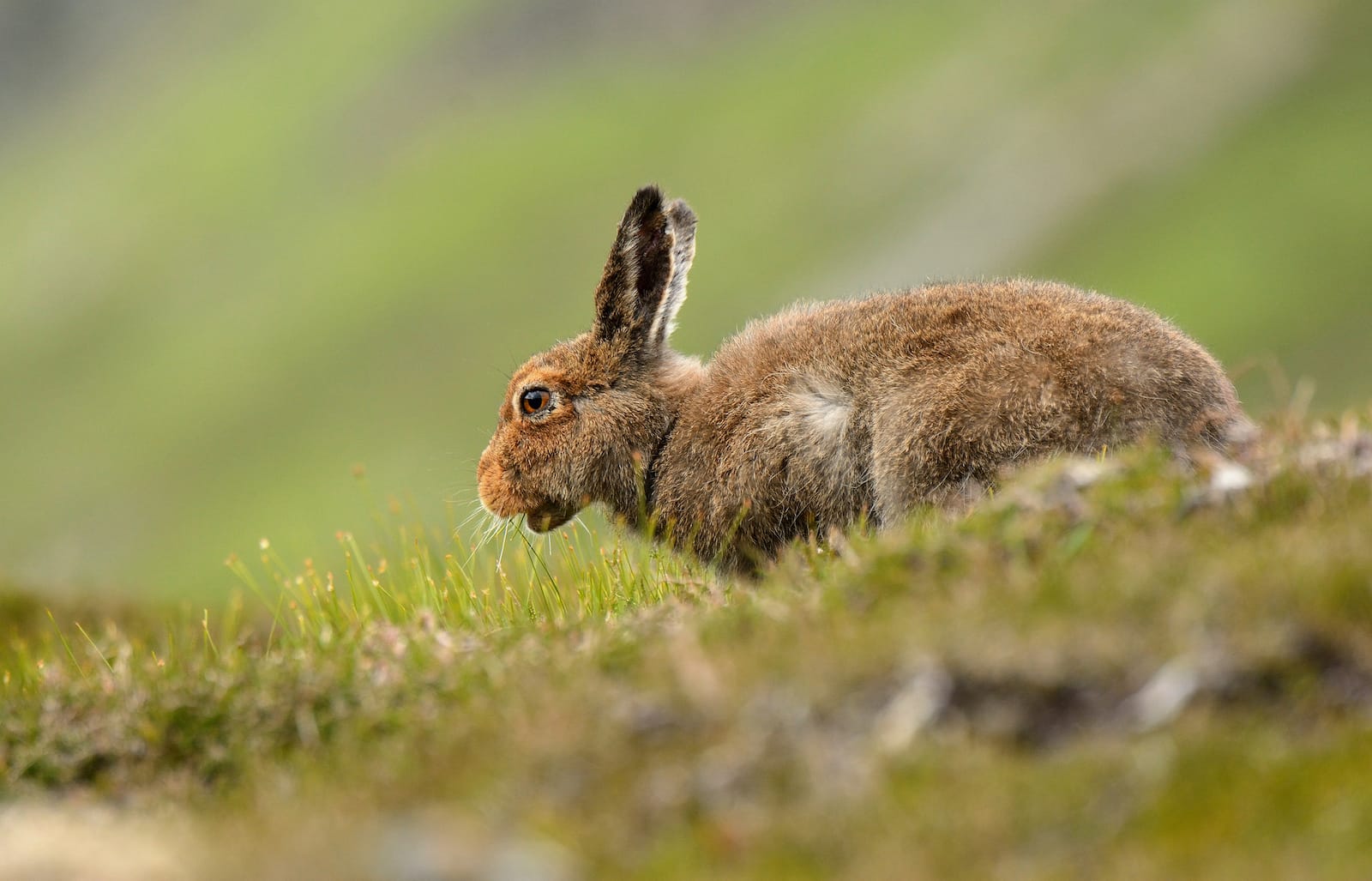In light of ‘severe’ population declines, environmental and outdoor organisations call for a temporary ban on all mountain hare culling
Go for a walk in the Cairngorms, Monadhliath, or many other upland areas of Scotland and you may be lucky enough to see mountain hares. They camouflage themselves well against the terrain and often turn pure white in winter. Britain’s only native hare, they play a vital role in the complex ecosystem of Scotland’s upland environment.
But these beautiful creatures are facing unprecedented threats due to wide-ranging culls on grouse moorlands.
A lack of scientific evidence
Despite the fact that the Scottish Government has a legally binding duty to maintain populations ‘in a state of good health’, mountain hares are now routinely culled on a massive scale.
These culls are a fairly recent development. It’s thought culling mountain hares protects red grouse against the tick-borne louping ill virus, therefore increasing the surplus of grouse to be shot at the end of the summer. However, there is a lack of scientific evidence to support this claim.
In 2014, a coalition of ten organisations warned the Scottish Government that the ‘voluntary restraint’ claimed to be in place was unlikely to be enough to protect this species. The organisations that make up the coalition are:
- RSPB Scotland
- Scottish Wildlife Trust
- Scottish Raptor Study Group
- Badenoch and Strathspey Conservation Group
- Cairngorms Campaign
- National Trust for Scotland
- Royal Zoological Society of Scotland
- Mammal Society
- John Muir Trust
- Mountaineering Scotland
In the years since, there have been reports of culls from across the country, suggesting this ‘voluntary restraint’ has been ignored. Conservationists believe these culls are having a serious impact on hare populations – in some areas leading to massive population declines and ‘potentially even local extinctions’.
To face this crisis, the group is now asking for a temporary ban on all mountain hare culling in grouse moors until measures exist to ensure populations can remain at acceptable – and sustainable – levels.
Put at risk by unregulated culls
Susan Davies, Director of Conservation, Scottish Wildlife Trust said: “Mountain hares are an iconic species that act as an indicator of the ecological health of our uplands, and seeing them gives much pleasure to hillwalkers and tourists alike.
“There has been continued and widespread culling throughout the period of voluntary restraint that was called for three years ago to allow research to be carried out. This suggests that some grouse moor managers have no concern for the long-term viability of mountain hare populations.
“We believe that grouse moor managers have a responsibility for this important native species. Lethal control should be halted until there is both accurate information on the number of hares culled, and the true effect of these culls on the health of the hare population is known.”
Duncan Orr-Ewing from RSPB Scotland, said: “The Scottish Government needs to do more to safeguard these iconic species of our upland areas. In 2014 we had serious concerns that the notion of voluntary restraint would be ignored by many in the grouse shooting industry and, with the evidence of culls continuing on many moors over the last three years, it seems that these fears have been well founded.
“The start of the mountain hare season has already begun meaning hare populations will continue to be put at risk by unregulated culls that we believe are resulting in localised disappearance of hare populations. We still do not know what impact these large-scale culls are having on mountain hares’ wider conservation status and this could mean that the Scottish Government may be in breach of its legally binding international obligations for this species.
“We trust that this issue will also be considered by the forthcoming independently led expert group, announced by the Cabinet Secretary for the Environment at the end of May 2017, which will be looking at how grouse moors can be managed sustainably and within the law.”
Header image © James Roddie Photography









